Tow Rig Capsule Review: 1999 GMT800 Silverado 2500 3/4 Ton

The last time I looked at my 1969 Chevrolet CST/10, it was a pile of disappointment. After reviving it and replacing a freeze plug, it proceeded to pop three more freeze plugs during warm up. Time was beginning to run out, my dad’s house had gone up to market and quickly sold. The truck was a long way away from driving out of Houston, and I needed to get it out of town. Time and money were a factor, I didn’t have time to spend money running a truck and trailer to Houston, just for the CST/10. Thankfully, three things lined up: A truck, a trailer, and a reason to drive to Houston. The truck is a customer’s, who loans the truck out in return for a few favors on the truck’s maintenance. The trailer came from my friend’s rally shop, which I moonlight at. And the Lone Star Region Porsche Club had invited me to partake in their refreshed autocross program at Houston Police Academy just before the closing deadline on my father’s house. Win-win, right? I packed the suitcase, tools and dog, hemorrhaged a gas pump to fill the truck, and blasted to Houston.
The drivetrain is a gas 6.0L V8, the early all-cast iron version. Later 6.0’s and “LSx” truck engines moved to iron block and aluminum heads. The all-iron build of the early ones is a bit more stout against abuse. 300 hp and a flat 360 ft lb of torque work well at sea-level, providing excellent passing power and low end torque. To this day, it’s one of the friendliest gas engines in towing with its flat torque curve and excellent midrange power for highway use, and returns excellent fuel economy for a gas engine. I find the Ford 5.4 Modular and Dodge 5.7 Hemi from the GMT800 era were never quite as comfortable under load.
The transmission is a 4L80E, essentially a modernized overdrive version of the Turbo-400, the racetrack and workhorse hero for GM since the late 60’s. It also features a Tow/Haul mode, which changes the transmission mapping to ensure an easier day for the transmission and driver. Primarily, it holds third gear longer during climbs, and waits to lock the torque converter during hill climbs allowing the torque converter to torque multiply, allowing the 6.0L gasoline V8 to work harder under load. Four speed automatics seem archaic, but the gearing is well matched to for the 6.0.
Despite the air conditioning needing a recharge after a compressor replacement, the weather was pleasant enough for windows-down driving. In the GMT800’s, extended cabs do well with the rear vent windows open, which smoothly pull hot air out of the cab, negating the buffeting and noise with fully open windows. Cruise control was set at 70 mph, and three hours later, I arrived in my dad’s driveway.
That weekend happened to be an impromptu Chevy truck convention. The charcoal short-cab/short-bed is my godfather’s, serving duty in Houston with my dad during his move. It’s a plane Jane Silverado 1500 half ton, with a 4.3L V6 and a 5-speed NV2500. The NV2500’s gearing allows the 4.3 to work well in its torque band, and even makes for a great short-distance tow rig with its compact dimensions and small turning radius. These positive attributes in the city detract from its appeal on longer drives. It simply doesn’t have the wheel base and weight for highway towing in adverse conditions. That said, it has towed 7 cars for me in the past six months.
Around town with the trailer unhitched, the Silverado 2500 rides well. The chassis soaks up irregular roads, never bucking and kicking -the rough and overly-stiff ride often associated with 3/4 and 1-tons is nowhere to be found. Think of something that rides like a firm Cadillac: It has the big-body teutonic feel with firm, well-controlled suspension movement. Brakes are excellent, with a firm and progressive bite from the hydraulically assisted power brakes — unique to the Silverado 2500 and 3500, as the regular Silverado 1500 uses traditional vacuum assist. This provides stronger brake boosting, and constant boost under heavy load where engine vacuum is low. The steering is well weighted, and with a direct but soft feel when centered. It’s never twitchy or sensitive, but does translate minor adjustments accurately. Sway bars thicker than Goldberg’s neck ensure that the Silverado 2500 feels well planted on the road.
And here’s the real trick of the GMT800 pickups: Supreme visibility. With a low belt line, and shorter overall height than most modern pickups, the GMT800s are very easy to drive in tight situations. Even when hitched to our 24 foot deck trailer, vehicle placement is a breeze. Interior ergonomics have always been great, for me. Everything is in excellent reach of the driver, and there’s ample storage. It’s basic GM plastics, but this 290,000 mile Silverado 2500 managed to stay pretty quiet inside. The gauge cluster is comprehensive and very easy to read. Real oil pressure, water temperature, voltage, and transmission temperature gauges flank the speedometer and tachometer. Dummy gauges, like “Cool” to “Hot” gauges you commonly see, are useless to me. They are often highly inaccurate, and wild swings in readings are not accurately counted by them, at times. With a comprehensive set of numbered gauges, a driver can spot a problem before it becomes detrimental. While mostly sharing the same cluster with the Silverado 1500 1/2 ton, the additional transmission temperature gauge for the Sivlerado 2500 and 3500 models is very much welcomed.
But where these ingredients truly shine is on the highway with a load. Sunday, after the LSRPCA autocross, my dad and I packed up the CST/10 with boxes of spare parts, and loaded it onto the trailer.
The CST/10 weighs just under 5,000 pounds, and the trailer is about 2,400 pounds. Properly loaded, the chassis is largely unaffected by the weight. There’s more heave in the suspension over large movements, but the truck is rarely jarred by trailer movement. Braking stability is excellent “panic” stops proved stable, dead-straight, and with aggressive and effective ABS action. Everything is well-managed in poor weather, high winds and wet roads do not easily upset the Silverado 2500.
The drive out of Houston was smooth. Thankfully, over the weekend my father and I recharged the A/C system. Life was much better after that, happily trucking along with the windows sealed tight. I took a 20 mile jog to Cypress to visit my mother’s place, and stayed the night with a fresh start on Monday. This ended up being a good choice, as 15 miles outside of Cypress my trailer lost a wheel bearing – the hub cap had fallen off somewhere along the way. With no grease, the outer bearing fell apart, dumping the outer race and rollers on Highway 290, and quickly began to overheat. I caught it early after glancing at the mirrors to find plums of smoke coming out of the fender, and pulled aside.
Thankfully, I was only 2 miles past Hempstead, a podunk farming town off the main highway. And with an extra dose of luck, I managed to break down in front of a custom golf cart shop, which managed to have tons of space to drop trailer and backtrack to Hempstead. My dog, Quesa, happily wondered around the gravel parking lot, taking in every smell possible. Hempsted is still the old south, in the “yes sir, yes ma’am” tradition. It’s a place where you can leave a truck running while inside a parts store, to keep your dog cool, and not have to worry about anyone tampering with it.
Back on the highway, the Silverado 2500 is a smooth towing missile. With the cruise set at 70, we hummed down to San Marcos, where the truck would stay at a friend’s rally shop. A sleeping dog is a good sign of a smooth drive. Even with 20 mph crosswinds, the Silverado 2500 maintained a steady heading at all times. The overall fuel mileage for the entire trip, about 75% highway and 25% city, was 16.2 mpg, roughly $120. Not terrible.
Though late, I rolled into San Marcos around sunset, and quickly unloaded the CST/10. Back to back, you can see the strong styling elements of the CST10 in the GMT800 Silverado.
The price for one of these? Just a few grand, near me, anywhere from $2,000 to $5,000 for a fantastic and livable budget tow rig. Excellent road manners, ease of service under the hood, and low running costs — these old GMT800 trucks are one of the best used-truck buys out there. With only a minor compromise in ride softness compared to the Silverado 1500, the additional hardware is worth the 2500 nameplate and both are valued near the same. Truly the last of the modest fullsize pickups.

More by Phillip Thomas
Latest Car Reviews
Read moreLatest Product Reviews
Read moreRecent Comments
- Pig_Iron This message is for Matthew Guy. I just want to say thank you for the photo article titled Tailgate Party: Ford Talks Truck Innovations. It was really interesting. I did not see on the home page and almost would have missed it. I think it should be posted like Corey's Cadillac series. 🙂
- Analoggrotto Hyundai GDI engines do not require such pathetic bandaids.
- Slavuta They rounded the back, which I don't like. And inside I don't like oval shapes
- Analoggrotto Great Value Seventy : The best vehicle in it's class has just taken an incremental quantum leap towards cosmic perfection. Just like it's great forebear, the Pony Coupe of 1979 which invented the sportscar wedge shape and was copied by the Mercedes C111, this Genesis was copied by Lexus back in 1998 for the RX, and again by BMW in the year of 1999 for the X5, remember the M Class from the Jurassic Park movie? Well it too is a copy of some Hyundai luxury vehicles. But here today you can see that the de facto #1 luxury SUV in the industry remains at the top, the envy of every drawing board, and pentagon data analyst as a pure statement of the finest automotive design. Come on down to your local Genesis dealership today and experience acronymic affluence like never before.
- SCE to AUX Figure 160 miles EPA if it came here, minus the usual deductions.It would be a dud in the US market.

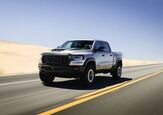
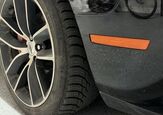

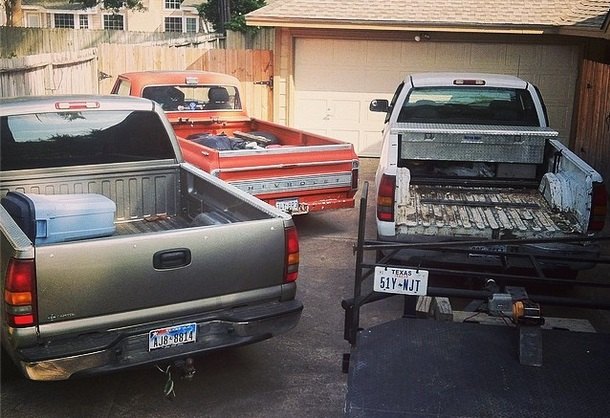




















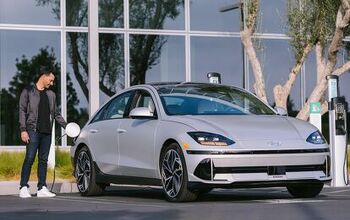
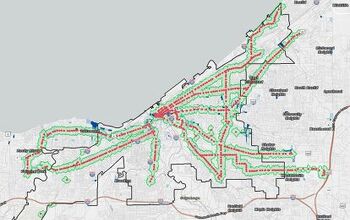




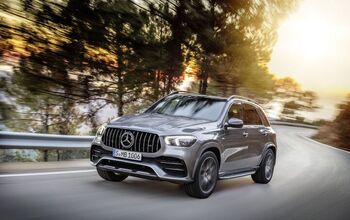




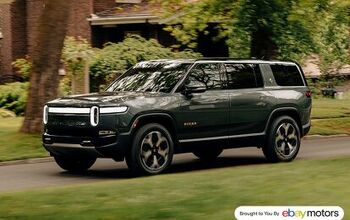

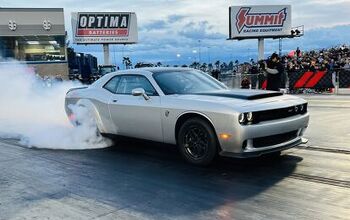


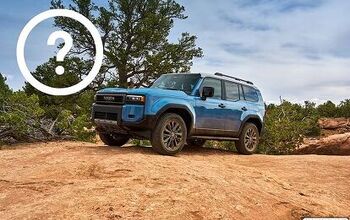
Comments
Join the conversation
I have a very similar GMT800: a 2001 Chevy 2500HD crew cab, long bed with the 6.0L/4L80. I bought it specifically to tow a camper (4500lbs) and agree with everything in the review. The crew cab + log bed makes it a bear to park or drive in parking lots, but as a tow rig it can't be beat. I've towed my trailer with smaller SUVs that were closer to maxing out their tow ratings and I can assure you that when it comes to tow ratings, more is better. The front IFS soaks up bumps under all conditions, the rear is better behaved with a load on it. The powerplant combo is great at towing. While a 4 speed seems archaic today, that 4L80 is predictable and never hunts or unexpectedly downshifts. And I'd happily take that 6.0L in any car or truck. Lotsa torque and decent mileage, though I have to listen to piston slap at idle. This appears to be a common annoyance in the first gen 6.0s. I wish I'd held out for a 4wd version so I could confidently use it to drive to the ski hills in winter. And the front seats are terrible, they feel like old Lazy-Z-boys with the center springs removed. But overall, the value can't be beat for a dedicated tow vehicle. Someone want to chime in with significant differences between the 1500HD, 2500 and 2500HD? Not just the Wikipedia summary, but real world experiences?
Cadillac Brougham with the tow package for me, thank you very much.